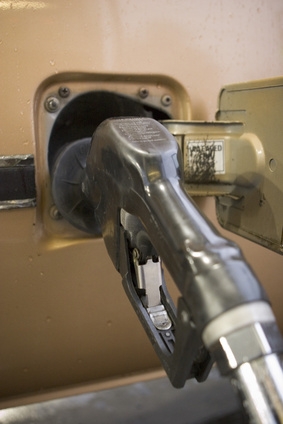
A hydrogen generator gives your car engine the ability to run on hydrogen gas instead of gasoline. With the increase of fuel prices, there has been a growing concern about the costs of everyday travel. There has also been a concern about the pollution of the environment. A hydrogen generator helps to prevent both of these problems. Hydrogen is light, colorless, odorless and nontoxic. This ensures that there will be no harmful emissions. It can be found in abundance, and the energy from the water helps to improve fuel efficiency. Hydrogen generators are simple to make and easy to maintain.
Fill the stainless steel container with water. Add 1 tablespoon of salt and stir until the salt completely dissolves.
Drill three holes into the steel container lid. Two of the holes should be large enough for the wing nuts to fit into. The third hole should be large enough to fit the plastic tube with PVC fitting through.
Fasten the wing nuts to the lid of the steel container by pushing them through two of the holes. Use the sealant to secure the nuts in place.
Insert the plastic tube with PVC fittings through the third hole in the steel container lid. Use sealant to secure it into place.
Put the two stainless steel plates into the container filled with salt water. The plates should be positioned close to each other.
Cover the steel container with the lid and close it tightly. Use the sealant to secure the lid into place. This will help to ensure that there will be no leaks.
Drill a hole into the car's air filter. Thread the other end of the plastic pipe with PVC fitting through the hole in the air filter. This will help to ensure that the resulting hydrogen gas will go directly to the vehicle's combustion chambers.
Connect each power cable. Connect one end of the power cable to the wing nuts on the lid of the steel container. Connect the other end of the power cable to the fuse box, which is located inside the vehicle's dashboard.
Seal each connection with sealant. Make sure the pipes and cables are secured into place. This will ensures that there will be no leaks.
Test your generator. Turn your vehicle's motor on. The water should start to fizz and appear as if it is boiling. Check for any possible leaks.